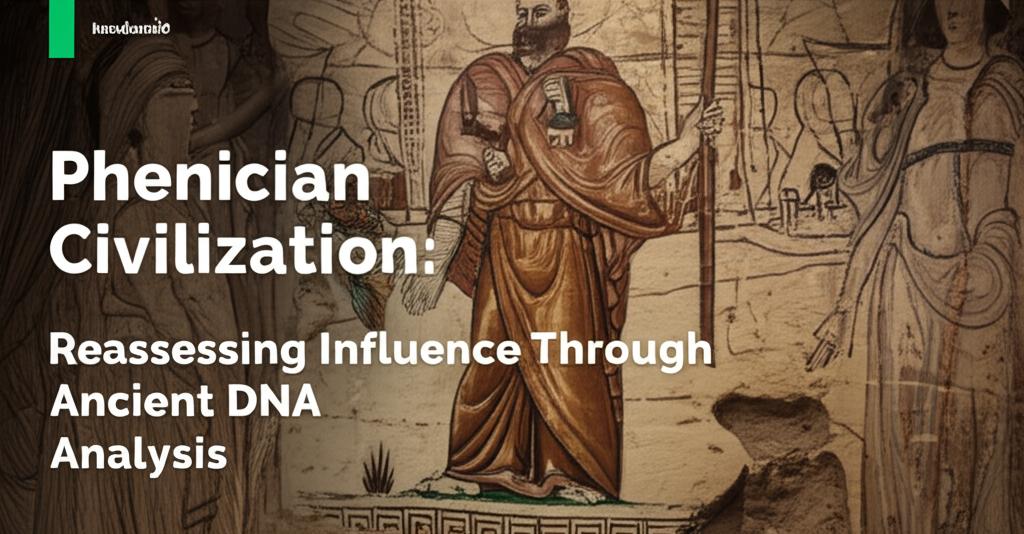Ancient DNA analysis is significantly reshaping our understanding of the Phoenician civilization's influence, particularly challenging long-held beliefs about how their culture spread across the Mediterranean. Here's a summary of recent findings:
Genetic Heritage vs. Cultural Spread:Recent studies, including a major one published in Nature analyzing genome-wide data from 210 ancient individuals across Phoenician and Punic sites, have revealed a surprising disconnect between genetic ancestry and cultural adoption. While Phoenician culture, language, and innovations like the alphabet became widespread, the genetic contribution of Levantine Phoenicians (originating from the area of modern-day Lebanon) to Punic populations in the central and western Mediterranean (like Carthage) appears to be minimal.
Cosmopolitan Punic World:Instead of large-scale migration and population replacement by Levantine Phoenicians, ancient DNA suggests Punic communities were genetically diverse and cosmopolitan. The majority of individuals in Punic sites, including the powerful city of Carthage, showed genetic profiles more similar to ancient populations from Sicily and the Aegean region. There was also significant North African ancestry present. This indicates that Phoenician culture likely spread through dynamic processes of cultural transmission, assimilation, trade, and intermarriage with local populations, rather than mass migration of people from the Levant.
Key Findings from Recent DNA Analysis (as of early May 2025):- Limited Levantine Genetic Input in Punic Populations: Studies consistently show that Punic populations in areas like North Africa, Iberia, Sicily, and Sardinia had surprisingly little direct genetic ancestry from the Phoenician heartland in the Levant.
- Diverse Genetic Makeup: Punic sites were home to people with varied ancestries, primarily drawing from Sicilian-Aegean and North African gene pools. This suggests a melting pot of cultures where Phoenician traditions were adopted by genetically diverse local and migrant groups.
- Cultural Transmission Over Genetic Replacement: The spread of Phoenician influence seems to be a case of cultural exchange and integration, where local populations adopted Phoenician customs, language, and material culture without being genetically replaced by large numbers of Levantine settlers.
- Interconnected Mediterranean: The genetic findings underscore the deeply interconnected nature of ancient Mediterranean societies. People moved, traded, and intermarried across vast distances, creating complex genetic networks. Researchers even found close relatives (second or third cousins) buried in different Punic sites across the Mediterranean, highlighting this interconnectivity.
- Challenging Previous Assumptions: For a long time, it was assumed that the renowned Phoenician alphabet and their widespread trade networks meant a significant genetic dispersal from the Levant. Ancient DNA is now showing that cultural influence can spread extensively without a corresponding large-scale movement of people.
- Earlier Discoveries Complemented: Even earlier, smaller-scale studies, like the analysis of the "Young Man of Byrsa" (a 2,500-year-old Phoenician from Carthage), had hinted at unexpected genetic connections. This individual possessed a rare European hunter-gatherer mitochondrial DNA lineage, suggesting that even among those identified as Phoenician, there could be diverse origins due to Phoenicia's extensive trade networks.
This new wave of ancient DNA research is forcing a reassessment of how civilizations expand and exert influence. In the case of the Phoenicians, their legacy appears to be more about the power of their ideas, innovations, and trade networks to integrate and be adopted by diverse Mediterranean peoples, rather than a story of demographic conquest or large-scale settlement by a genetically homogenous group from the Levant. The Phoenician world was a vibrant, multicultural sphere, and ancient DNA is providing a much clearer, and more complex, picture of its inhabitants.

